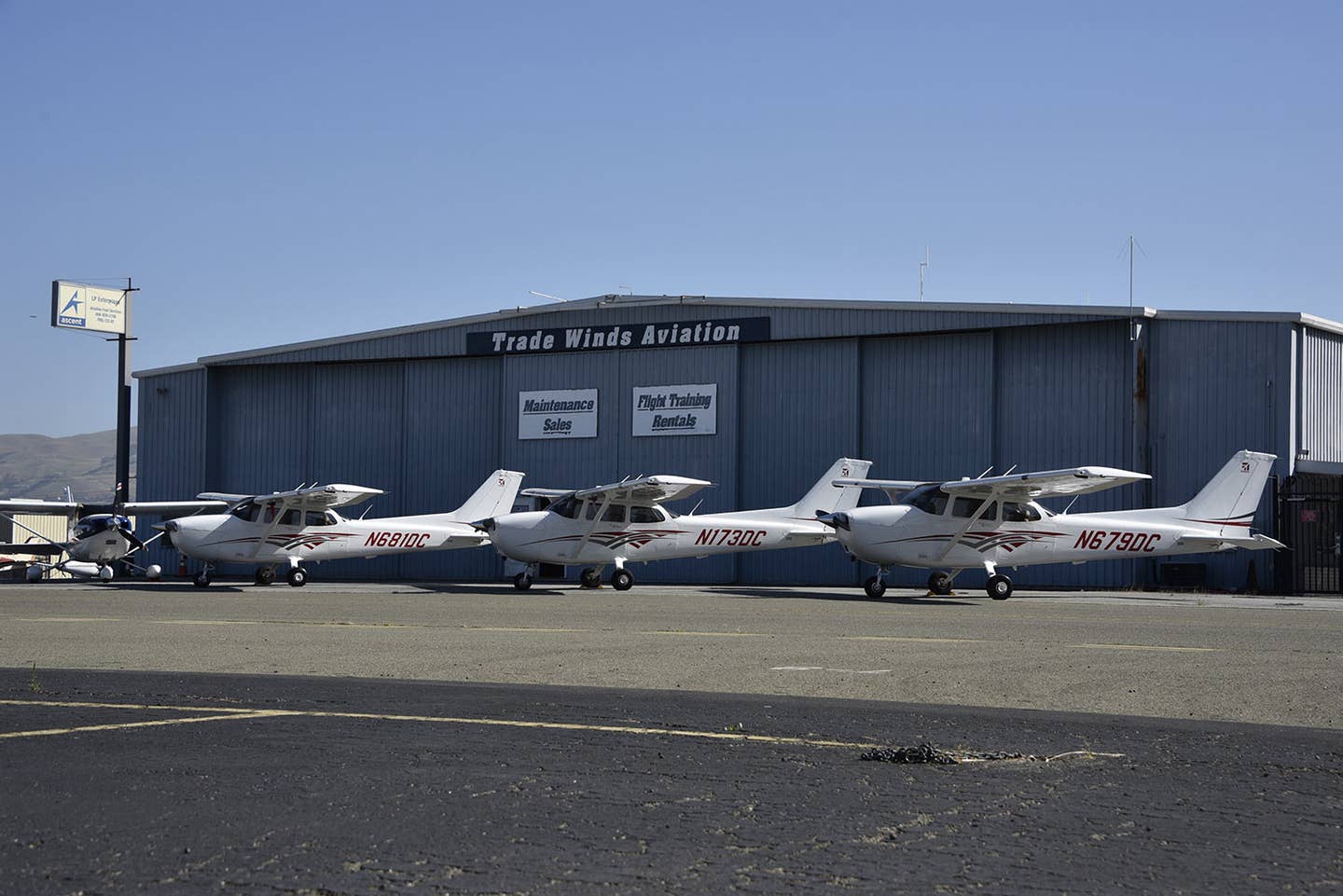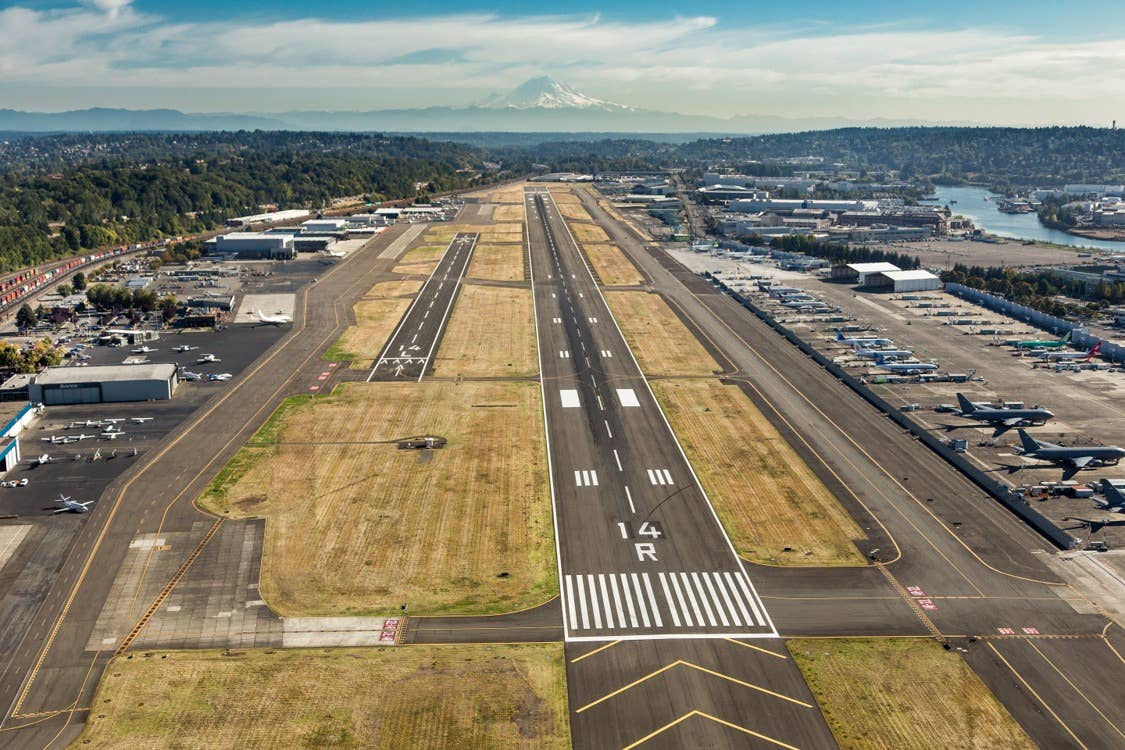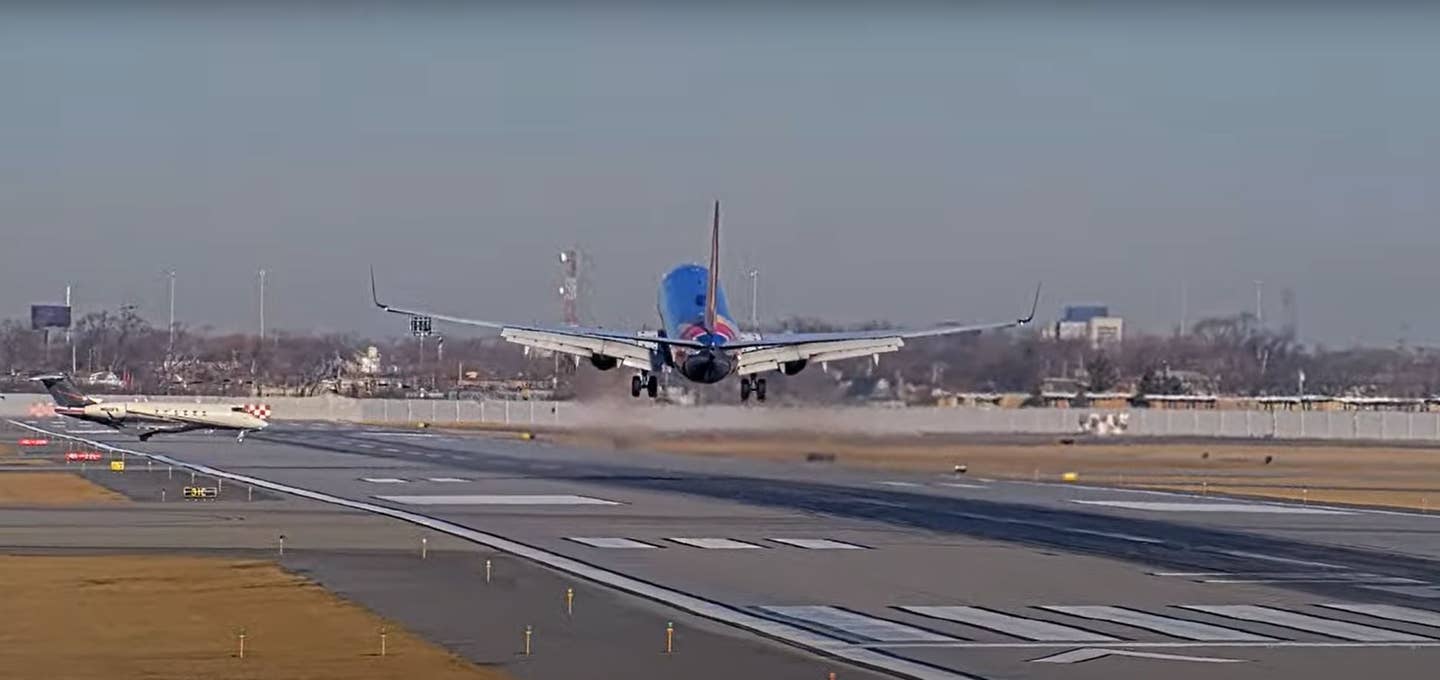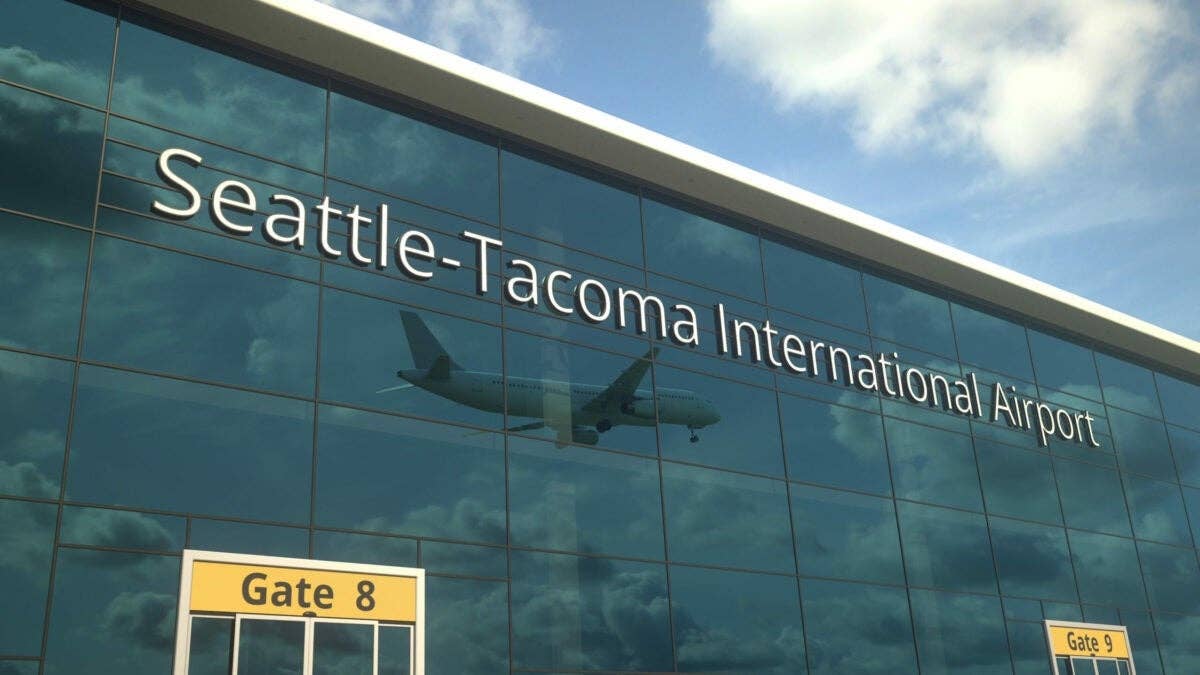The Black Ribbon of Roosterville
The 20-foot-wide landing strip at Roosterville Airport is one of the narrowest paved public-use runway in the state of Missouri.
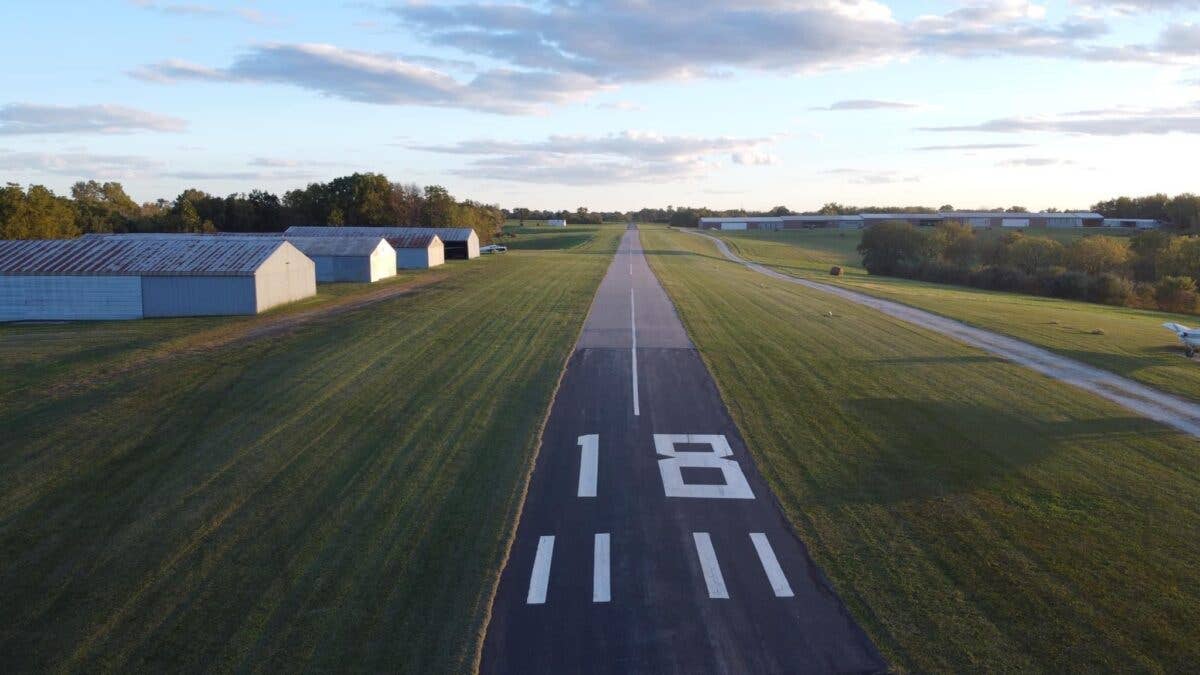
Looking down Roosterville Airport’s 2,780-foot-long, 20-foot-wide asphalt runway, which is often called the “black ribbon. [Courtesy: Roosterville International Airport]
“My take on what makes Roosterville ‘International’ Airport (0N0) unique is—if you remember The Andy Griffith Show—everyone came to the barbershop. Well, here, everyone comes to the airport. We have a lot of pilots, retired pilots, and others here, so it’s just a wide spectrum of aviation enthusiasts at Roosterville—both young and old,” said Dee Stuber-Sligar.
Her father, Paul Stuber, has owned the airport for nearly three decades. Today, he and several other family members are active in its continued operations.
Just like Floyd’s Barbershop, Dee was joined in a verbal overview of Roosterville by her brother, Gary, and her husband, Frank. The most tenured Roostervillian, Paul, was also onsite and helped to clarify a few points related to the airport’s 58-year history.
A Charles Taylor Award recognized master mechanic and private pilot, Paul first came to the airport in 1974. Ever since, and to this day at 92 years young, he has wrenched on a litany of piston aircraft at the airfield. In an effort to keep the airport going, Paul purchased it, Dee explained.
“Early into the airport’s history, a disagreement arose between its two owners. One erected a fence on their part of the property and refused to allow the other to have access to the airport. Then negotiations began, and Floyd Mitchell purchased the entire airport. So that’s why it was known as Mitchell Field. But because the area was known as Roosterville, even the FAA identified Mitchell Field as Roosterville Airport. That’s how the legacy began.”
“In June of 1978, Floyd Mitchell sold the airport to a local pilot and aviation enthusiast, Ed Duckworth. After going through some hardship, the airport was about to be sold on the courthouse steps. My dad then began negotiations to purchase the airport. Then on May 29, 1993, at 11:23 a.m. Roosterville Airport officially changed hands again and was purchased by my parents. At the time he purchased the airport, there were only 14 airplanes based here. But within four months, every T-hangar was occupied—plus there were many tie downs as well. There was a rumor that was all because of my dad’s sparkling personality, but I’m not sure about that,” Dee jokingly added.
Gary says that the airport is well known by pilots in the area and beyond for its “black ribbon,” the nickname for its 20-foot-wide asphalt runway. He explained that it’s one of the narrowest paved public-use runway in the state of Missouri, although there is grass on either side—totaling 100 feet of usable runway width.
“There are presently 64 hangars, and they generally stay pretty full and have always sold 100LL. There is also a flight school here, Rebel Aviation, that’s been here since the late 1980s. Right now, we have our fair share of experimental aircraft, taildraggers, and vintage aircraft. There is one twin based here,” Gary said.
For perspective, Gary and Paul fly a Mooney M20C, as well as a Beechcraft Sundowner and Taylorcraft L-2 from the airport. Frank has a Cessna 182H based at Roosterville. The trio’s love for aviation is shared by fellow airport tenants, which includes a local EAA chapter; Chapter 612.
“Just speaking about what other people say, the laid-back nature of Roosterville is unique. It feels more like an old-time airport than some others.” Frank stated.
“I remember my father-in-law, Paul, made a comment not that long ago. He said, ‘My objective in running this airport is to provide a facility for just the regular guy to own and fly his own airplane.’ That comment has stuck in my mind, because we have guys flying their own airplanes here that have full time-careers at the motor plant (for example). They can get to the point where they can afford an airplane and they can afford to keep it here. The kind of guys that we get here are the ones who want to own and fly airplanes for fun. They all love general aviation,” Frank added.
Aside from keeping the airport talk and the traffic pattern lively, these stakeholders routinely step up to serve the airport in a different capacity.
“Most of the T-hangars are just barn-built tin and pole buildings, that definitely aren’t fancy. Most of them are concrete floored now, though. There is a local concrete company that would have surplus concrete that Geiger Concrete would pour and donate. In 2008, the office burned down. We have a lot of retired construction individuals here and within a month, we had a new building that was all built by pilots here at the airport. They donated their time and dad bought the materials; it was honestly like a barn raising. It just happened,” Dee recalled.
“The pilots like the vibe of Roosterville, so if there’s something that needs to be going on—they’ll do it to help out. People will come and mow and weed-eat for free. It’s a community-feel airport.”
Even with the number of aviation enthusiasts invested in the airport’s future, times have certainly changed from the airport's early days and its once remote North Kansas City location. Gary provided his viewpoint.
“I’ve been coming to this airport since I was in grade school. I used to be able to ride my bicycle here from town and if you saw two cars, that was a lot of traffic. Now we have a high school within a mile of the airport, so you can see the urban sprawl coming.”
The four Roostervillians collectively acknowledged the incoming headwinds that the future creep of both Kansas City (presently one tenth of a mile away from the airport property) and Liberty (a quarter mile away). But to the benefit of local pilots, Roosterville Airport is going to stay around for as long as possible, the group agreed.
Airport updates, as well as testimonials from its passionate pilot community, can be found on the airport’s Facebook page.

Sign-up for newsletters & special offers!
Get the latest FLYING stories & special offers delivered directly to your inbox


